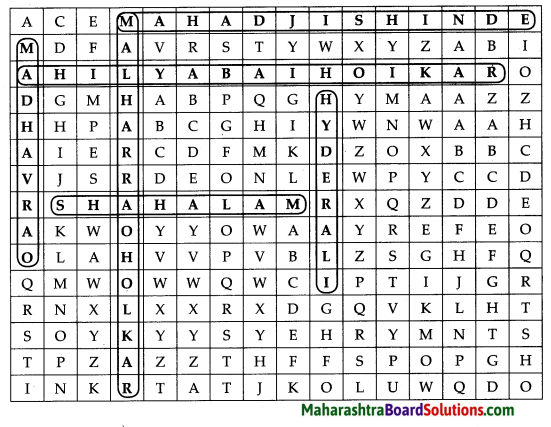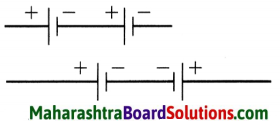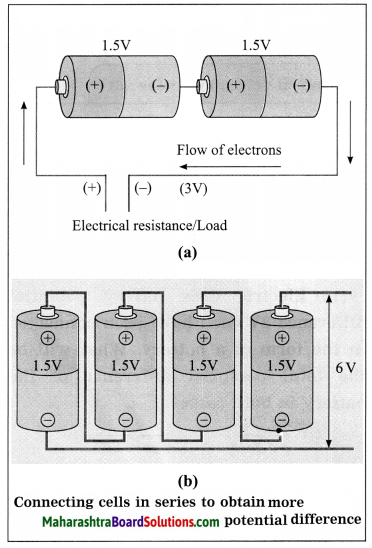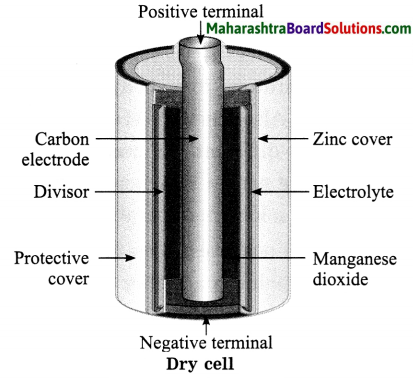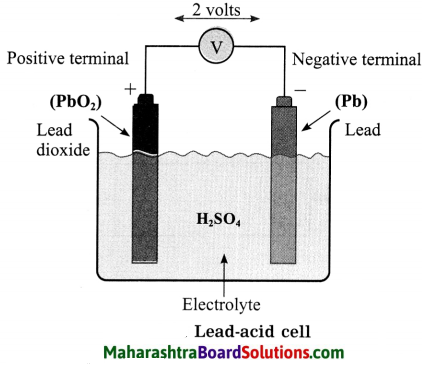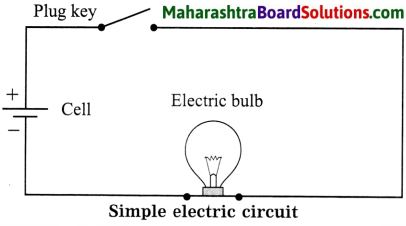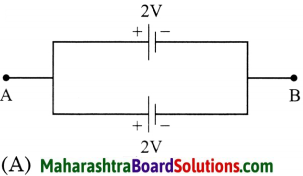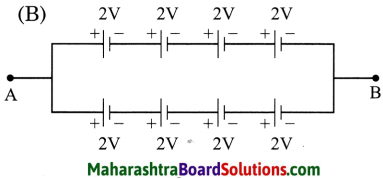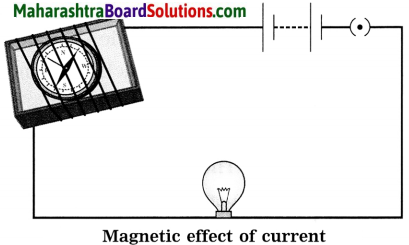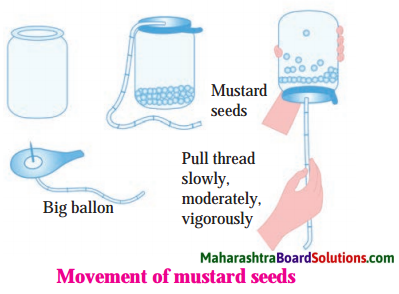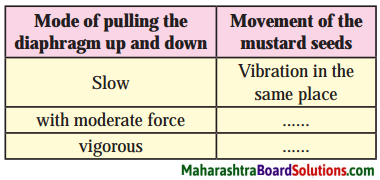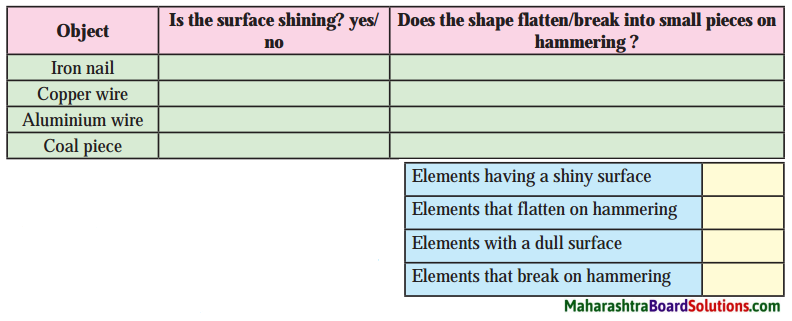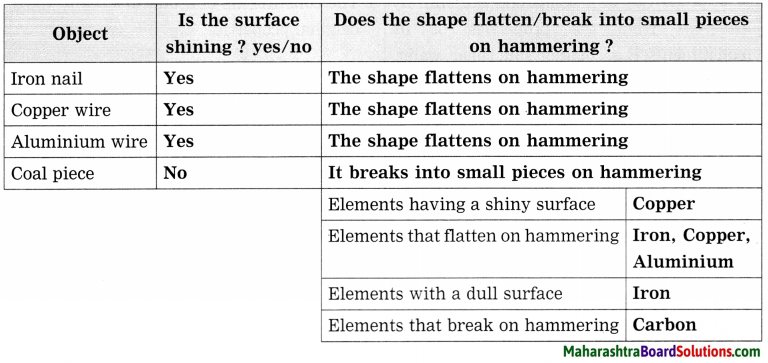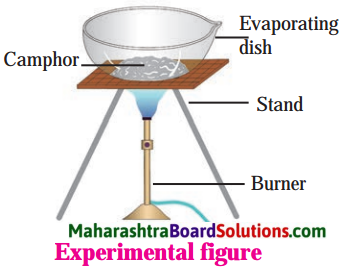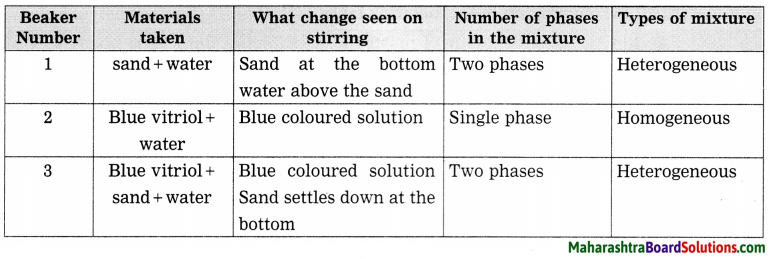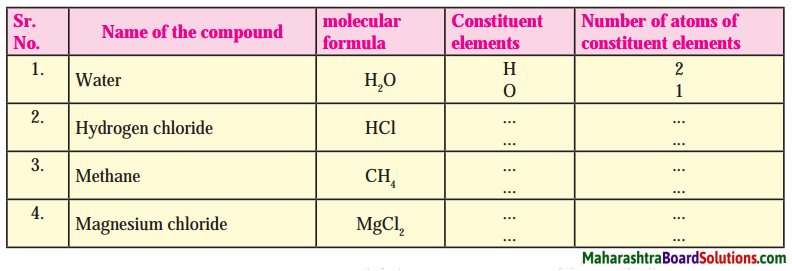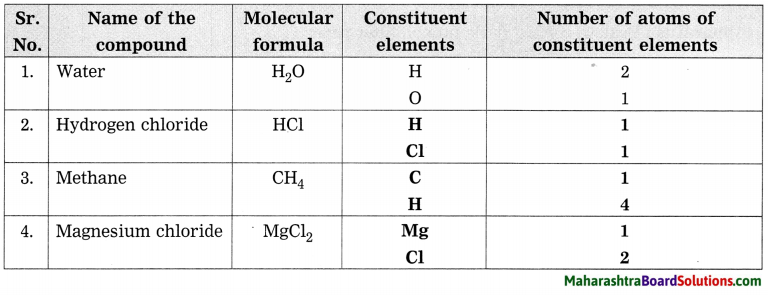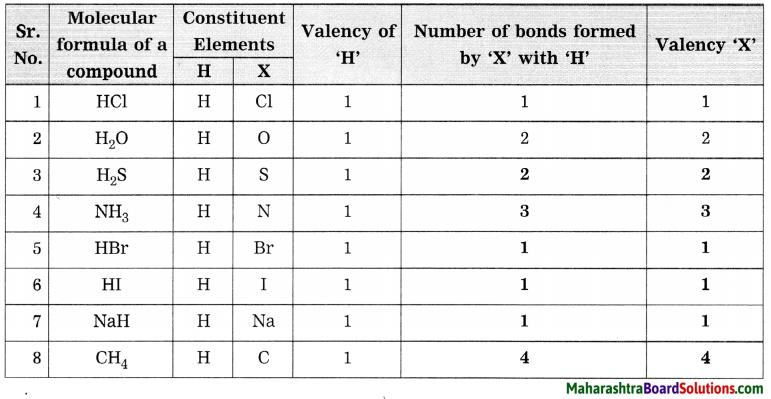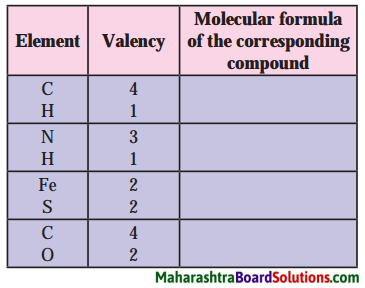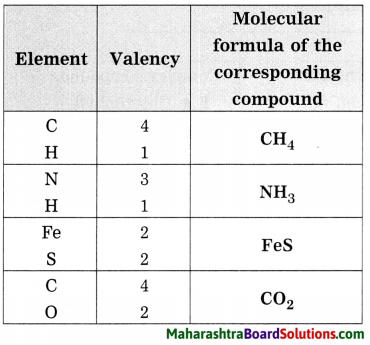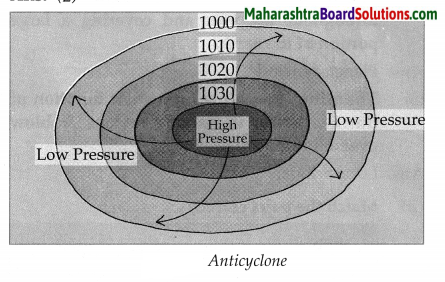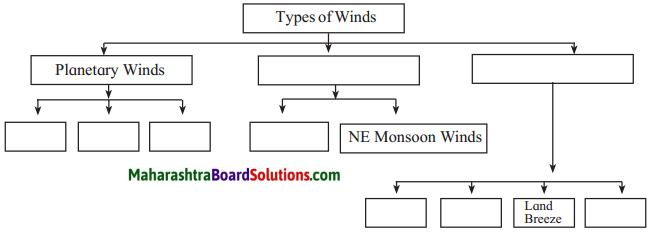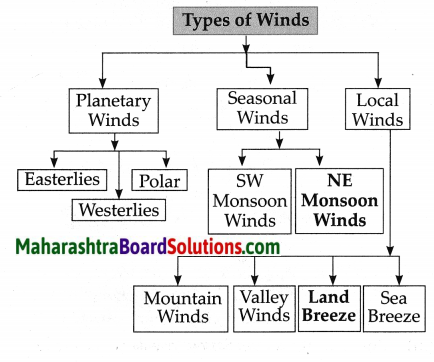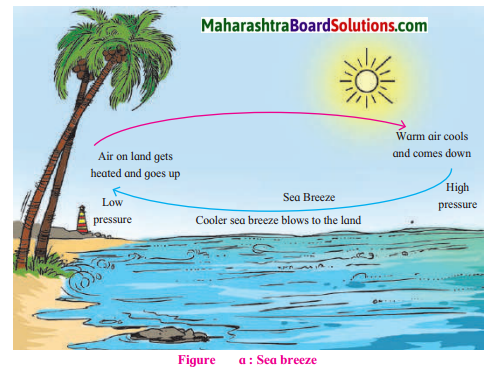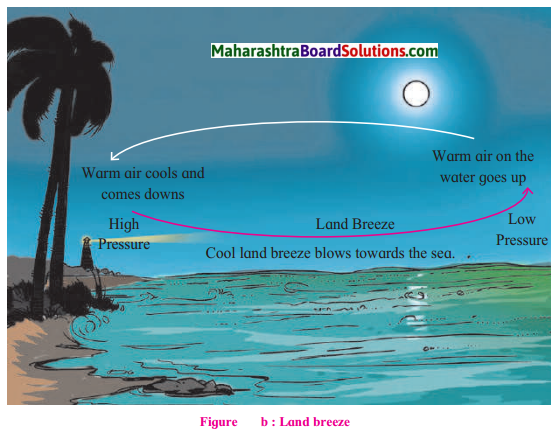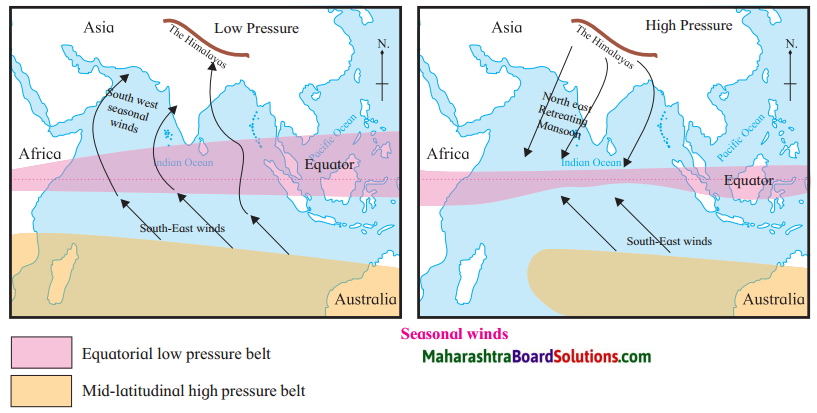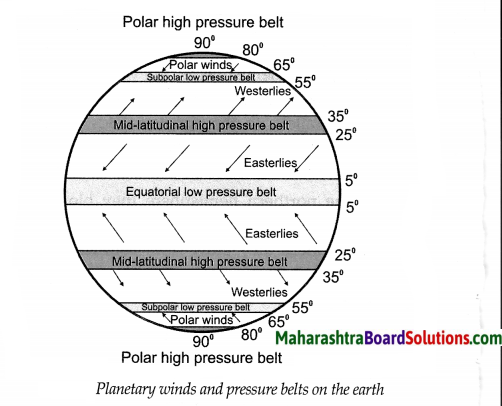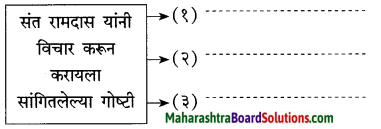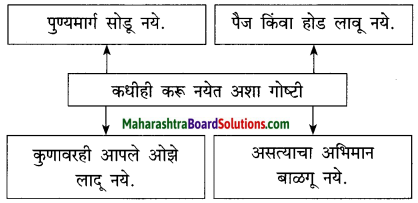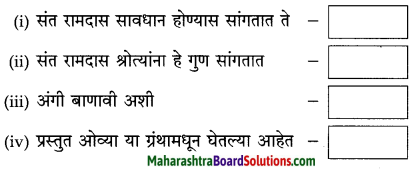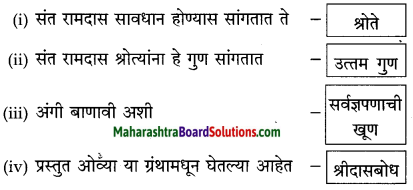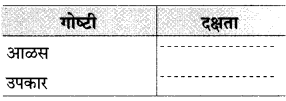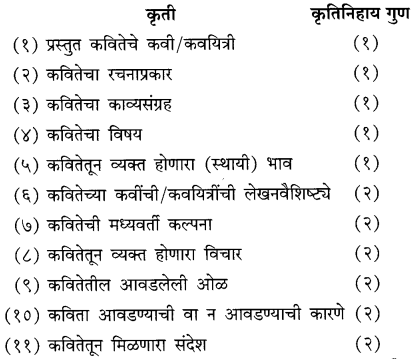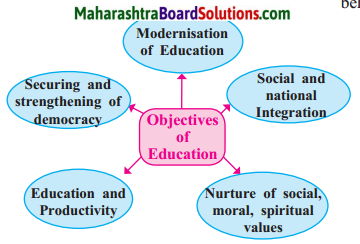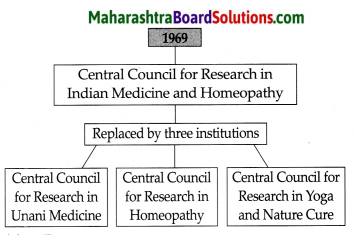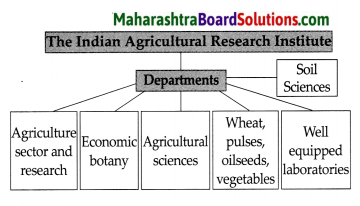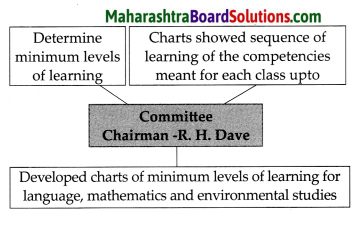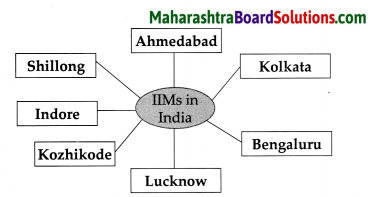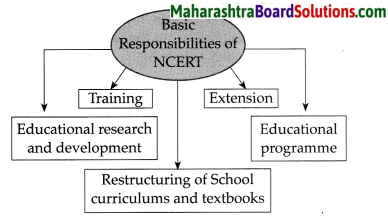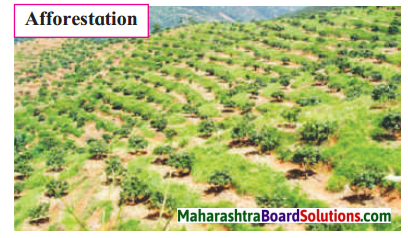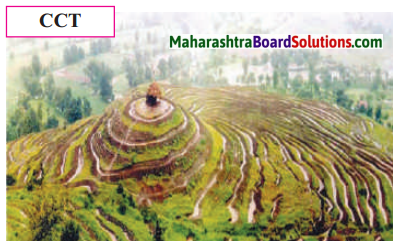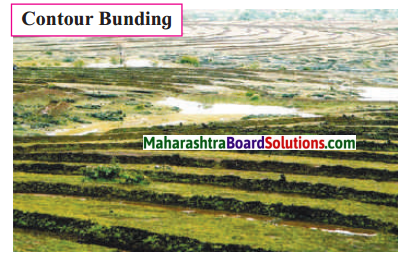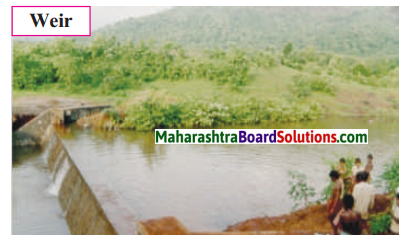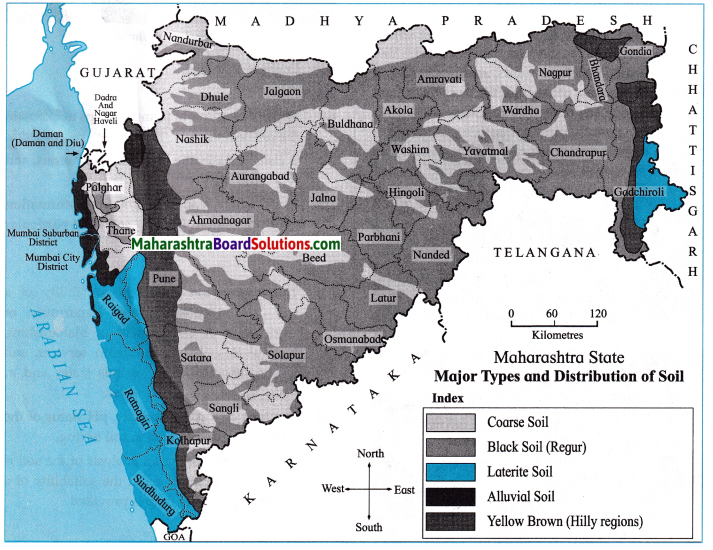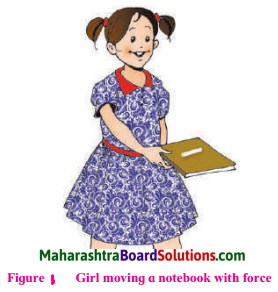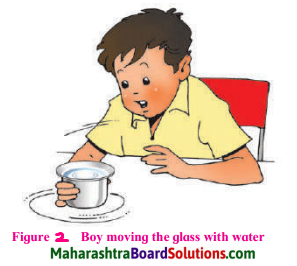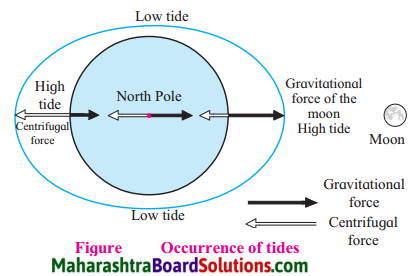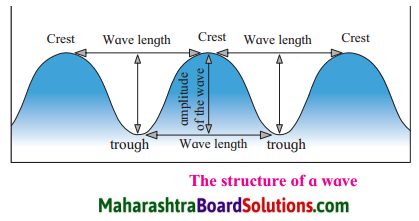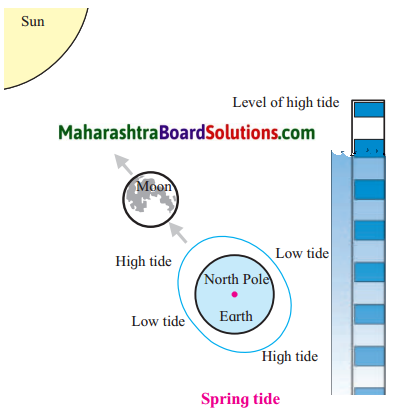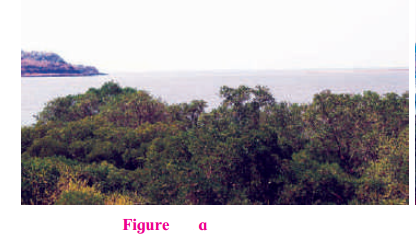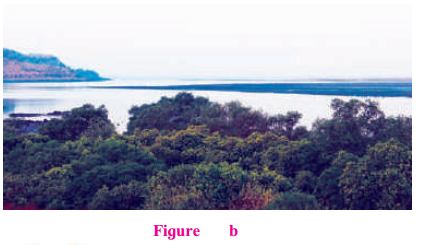Balbharti Maharashtra State Board Class 7 History Solutions Chapter 13 Life of the People in Maharashtra Notes, Textbook Exercise Important Questions and Answers.
Maharashtra State Board Class 7 History Solutions Chapter 13 Life of the People in Maharashtra
Class 7 History Chapter 13 Life of the People in Maharashtra Textbook Questions and Answers
1. Complete the chart.
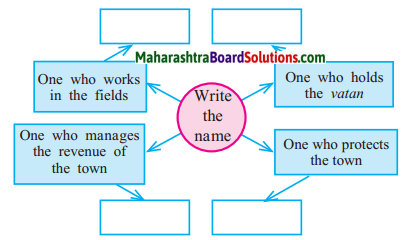
Answer:
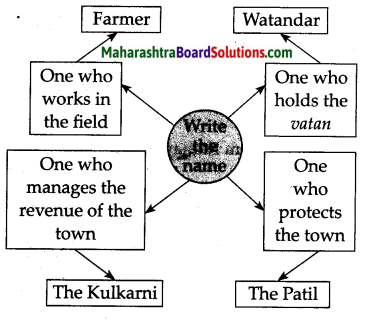
2. Which undesirable customs are prevalent in today’s society ? Suggest measures for their eradication.
Answer:
The bad traditions prevalent in the society are:
- No Education for girls.
- Female infanticide.
- Dowry.
- Animal sacrifice
- Superstitions.
- Bonded labour.
The ways to get rid of these bad traditions are:
- Special provisions for girl’s education.
- Awareness programme for women.
- Inculcating scientific attitude.
- Special law to protect the women and girl child.
- Thinking positive, parental guidance to think in a systematic way, to get science knowledge update to disperse the blind belief will eradicate superstition.
3. Make a detailed notes of the festivals and auspicious days in your area.
Answer:
(a) Diwali, Holi, Mahashivaratri, Eid, Raksha Bandhan, Navaratri, Krishna Janmashtami, Gurpurabh, Parsi new year, Onam are celebrated with great pomp and show in our area.
(b) Sanskasthi Chaturthi, Ekadashi, Akshaya Tritiya etc., are some of the auspicious days celebrated in our area.
4. Use the following points to compare life in the era of Shivaji Maharaj and today’s life.
| S. No. | Point | At the time of Shivaji Maharaj | Today |
| (1) | Transactions | …………… | ………… |
| (2) | Houses | ……………. | Permanent, Well-constructed cement-concrete multi-storeyed house. |
| (3) | Transportation | …………. | Bus, Railway and Aeroplane. |
| (4) | Entertainment | …………… | ……………. |
Answer:
| S. No. | Point | At the time of Shivaji Maharaj | Today |
| (1) | Transactions | Barter system | Coins, Paper money, Plastic money, Currency – Rupee, Cashless transaction through banks. |
| (2) | Houses | Village Houses: Made with simple mud and bricks. Cities- Wadas with one or two storeys. | Permanent, Well-constructed cement-concrete multi-storeyed house. |
| (3) | Transportation | Bullock cart, Horseback, Boat | Bus, Railway and Aeroplane. |
| (4) | Entertainment | Tamasha, Ballads on Dap | Music, Drama, Dance, Watching Television, Play, movie, Opera etc. |
Activity
Gather information about the capable women of our country and read it aloud in your class, e.g. information on P.V. Sindhu, Sakshi Malik.
Class 7 History Chapter 13 Life of the People in Maharashtra Textbook Questions and Answers
Complete the sentence by choosing the appropriate words from the options given below:
Question 1.
The Patils were given some land as Inam for his job as a _____. (Patil, Jagir, Watans)
Answer:
Patil
Question 2.
For any major or minor events or for battles an ______ was checked. (Time, Muhurta, Place)
Answer:
Muhurta
Question 3.
The _______ festival was celebrated on a large scale during the Peshwa Era. (Ganesh, Diwali, Makar Sankranti)
Answer:
Ganesh
Question 4.
______ script was used for day to day affairs. (Marathi, Sanskrit, Modi)
Answer:
Modi
Question 5.
______ was very popular sport. (Wrestling, Mallakhamb, Martial arts)
Answer:
Martial arts
Question 6.
The Jain Mandir at Jamod in Vidarbha had paintings of Jin Charitra, ______ stories (mythological, various festivals, animals)
Answer:
Mythological
Question 7.
________ was popular as an entertainment programme during the Peshwa Era. (Stage show, Tamasha, Lavani)
Answer:
Tamasha
Question 8.
_______ was a well-known painter. (Mallamma Desai, Gopikabai, Gangaram Tambat)
Answer:
Gangaram Tambat
Question 9.
The letters were carried by _______and messengers. (Birds, Camel riders, Post)
Answer:
Camel riders
Question 10.
People used to believe in ______ a lot. (astrology, scientific vision, dreams)
Answer:
astrology
Match the following:
Question 1.
| Column ‘A’ | Column ‘B’ |
| (1) Festival | (a) Mankoji |
| (2) Sport | (b) Bail-Pola |
| (3) Sculpture | (c) Mallakhamb |
| (4) Ghat | (d) Ghrishneshwar Temple |
| (5) Painter | (e) Toke |
Answer:
1 – b
2 – c
3 – d
4 – e
5 – a
Question 2.
| Column ‘A’ | Column ‘B’ |
| (1) The Patils | (a) To manage the revenue |
| (2) The Kulkarni | (b) To protect the village |
| (3) Black Soil, | (c) Work in an office |
| (4) White-collared | (d) Farmers |
Answer:
1 – b
2 – a
3 – d
4 – c
Answer in one or two sentences:
Question 1.
What was the chief source of production at the village level during the Peshwa era?
Answer:
Agriculture and agriculture based businesses were die chief source of production at the village level.
Question 2.
When was Ganesh festival celebrated?
Answer:
Ganesh festival was celebrated every year Bhadrapad Chaturthi to Anant Chaturdashi.
Question 3.
Which festivals were celebrated during Diwali?
Answer:
During Diwali the Balipratipada and Bhau- beej days were celebrated on large scale.
Question 4.
What were organised during the Jatras days?
Answer:
Wrestling Match were Organised during the Jatras days.
Question 5.
Which Subjects were taught in Pathshalas and Madarasas?
Answer:
Writing, reading, accounting were taught in Pathshalas and Madarasas.
Question 6.
Which games were played during the Peshwa Era?
Answer:
Martial arts were very popular, Mallakhamb Dand, Wrestling, Lathi, Dandpatta, Bothati these games were played.
Question 7.
What was the religious policy of Chhatrapati Shivaji Maharaj?
Answer:
(i) Chhatrapati Shivaji Maharaj had a liberal religious policy.
(ii) He believed that everyone should follow his or her own religion but nobody should force his or her religion upon others.
Question 8.
What did the daily meal of the people consist of?
Answer:
The daily meal consisted of Bhakari, onion, chutney and gravy.
Question 9.
What did men and women use to wear during that period?
Answer:
(a) Men used to wear dhoti, kurta, angarakha, turban.
(b) Women use to wear sarees (nine-yard) and blouses.
Question 10.
What were used in Wada decoration?
Answer:
Artwork, decorative painting, firewood, sculptures, mirrors were used in wada decoration.
Name the following:
Question 1.
The land was given as inam to Patils do the job.
Answer:
Patilaki
Question 2.
Festival celebrated on large scale.
Answer:
The Ganesh festival.
Question 3.
Crops grown.
Answer:
Jowar, bajra, wheat, nachni, corn, rice etc.
Question 4.
Education was given in.
Answer:
Pathshalas and Madarasas.
Question 5.
Modes of transport.
Answer:
Ghat roads, the bridges on the river, boats.
Question 6.
Means of communication.
Answer:
Camel riders and Messengers.
Question 7.
Popular outdoor games.
Answer:
Hututu, Kho-kho and Atyapatya.
Question 8.
Learned women in the Peshwa Era.
Answer:
(a) Veermata Jijabai
(b) Maharani Yesubai
(c) Maharani Tarabai
(d) Umabai Dabhade.
Question 9.
Famous architect during that period.
Answer:
Hiroji Indulkar.
Answer in brief:
Question 1.
Discuss everyday living of the people in that Era.
Answer:
Most of the people were staying in the village. The villages were self sufficient.
(a) Crops grown: The farmers grown the crops like jowar, bajra, wheat, nachani, com, rice etc.
(b) Food: The farmers’ daily meal consisted of bhakari, onion, chutney and gravy. Rich people’s meal consisted of rice, dal-varan, chapatis, vegetables, salads and milk products.
(c) The transaction in rural area were based on barter system.
(d) Houses: The houses were simple and were made of soil and bricks.
(e) Clothing :
(i) Men wear – Dhoti, Kurta, Angarakha, Turban.
(ii) Women wear – Saree (nine yard) and blouse.
Question 2.
The life of women’s during Peshwa Period.
Answer:
(a) Their world were confined to the house of first their father and then their husband.
(b) Their education was neglected.
(c) Only a few exceptional women had achieved any progress in literacy, administration and battle skills.
(d) They include Veermata Jijabai, Maharani Yesubai, Maharani Tarabai, Umabai Dabhade, Gopikabai, Punyashlok Ahilyabai.
(e) Customs like child marriage, unequal marriage, widowhood, keshwapan, sati, polygamy had imposed harsh restrictions on the way women lived.

